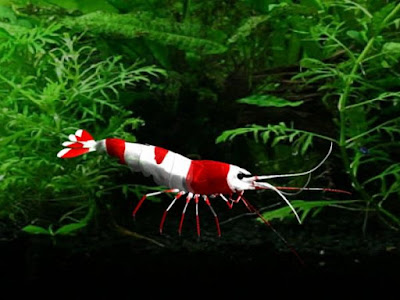The Great Algae Eating Fish for Aquarium: Longfinned Bristlenose Pleco
The Great
Algae Eating Fish for Aquarium: Longfinned Bristlenose Pleco– Ancistrus have always been popular
aquarium fish, primarily for their world-famous name as winner algae eaters,
and have been present in the aquarium hobby since at least the early 1900s. Of
interest, Axelrod states that commercial reproduction of this fish attempted
but was not able to raise the fry to a saleable size.
 |
Photo copyright from segrestfarms.com
|
The Great Algae Eating Fish for Aquarium: Longfinned Bristlenose Pleco
Of interest, Axelrod
says although he attempted commercial reproduction of the fish but was unable
to raise the fry to a saleable size. Franke's photographs, in "Breeding
Aquarium Fishes: Publication 6," show pictures of what we nowadays call
Ancistrus sp. 3 in the hobby. Franke did not offer a specific identity because
of his fish nor state where they were imported from. Possibly of interest that
is historical, the post of Franke was likewise of feeding fresh vegetables to
loricariids, the very first mention I really could find.
Originally these little
rascals came in the Amazon River basin. Supposedly some 50 species cruise the
channels and tributaries of this second longest river (some 260 miles shorter
than the Nile as Adrian Philp so rudely informed me) on the planet. But the
albinos probably came from an Asian fish farm. The ones we sell come from an
Iowa breeder.
Feeding
Ancistrus have always
been popular aquarium fish, mostly for his or her world-renowned reputation as
winner algae eaters, and have already been present in the aquarium hobby since
the early 1900s. The article "The Mating of Armor: Spawning A.
triradiatus" was written by Craig Barzso and Sandy Caster.
The Bushy nose pleco is
an omnivore species, but the bulk of its diet should consist of vegetable
matter. Canned green beans, spinach, lettuce, blanched zucchini, and cucumbers
are wholly relished. Spirulina established, algae wafers pellets, and flakes
compose a good staple diet.
Attractiveness
Bristlenose plecos eat
algae assiduously. The commoner plecos grow large, they turn into damaging
behemoths. Bristlenosers remain modest -- all is small –ed by manner . The
albinos remain under four inches. And their albino shade adds for their
attractiveness.
Bristlenose plecos blend
with all little and moderate fishes except their own sort or close relatives.
Man bristlenosers like to argue lands over. Should you have several, be sure to
provide a lot more than one hiding place. They get along fine in a typical
community tank as long as they've a hiding place.
Sex
Can be determined by longer
bristles on mature males. Male become mature when they have reached about
7-8cm. Males grow faster, and are wider than females. To select a pair from a
group, as it is likely the female and also the biggest for the male, it is
frequently best to choose the tiniest.
Procreation
Ancistrus is not too
difficult to breed. In the wild, Bushy nose plecos have a tendency to breed
when the rainy seasons begins after the dry season. You can consequently try to
mimic the beginning of the rainy season in the aquarium and a dry season, in
case your Bushy nose plecos are unwilling to spawn. They'll frequently spawn in
a cavern or upturned clay flower pot.
Added Info
As with all plecostomus
type fish, utilize a soft, fine mesh net to catch them. Their numerous spines
and sharp fins will get stuck in a ordinary net that is rough. Bogwood or
driftwood in the aquarium is a requirement in order for this species to remain
healthy. Bushy Nose are just one of the best plecostomus species.



Komentar
Posting Komentar